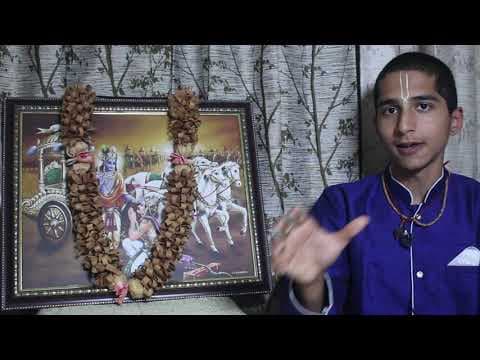Understanding Dharma and Compassion
The essence of Lord Krishnas teachings revolves around the balance between duty (Dharma) and compassion. While it is essential to be compassionate and sympathetic, especially as a devotee and a good person, fulfilling ones Dharma should not be hindered by these emotions. Lord Krishna emphasizes that in the course of performing ones duty, one must not hesitate even if it involves actions that might seem harmful. The wise do not lament for the living or the dead, understanding that the soul is eternal and beyond physical existence.
The Eternal Nature of the Soul
Lord Krishna explains that there was never a time when the soul did not exist, and there will never be a time when it ceases to exist. The soul is eternal and continuous. While the body undergoes changes—from infancy to old age and eventually death—the soul remains unchanged. The wise understand that the transformation of the body does not affect the soul. This realization helps one stay detached from the physical changes and focus on the eternal nature of the soul.
The Influence of Pleasure and Pain
Pleasure and pain are the primary forces that bind beings to the material world. These sensations arise from sense contact and are temporary. Modern biochemistry supports this view, highlighting neurotransmitters like dopamine that play a crucial role in this cycle. The pursuit of pleasure leads to desire, and the failure to attain it results in frustration and anger. Once pleasure is attained, it breeds greed. This cycle perpetuates delusion (moha), keeping beings trapped in the material world. Understanding the temporary nature of pleasure and pain helps one remain detached and focused on the eternal truth.
The Real and the Unreal
The unreal has no existence, while the real never ceases to exist. This fundamental truth emphasizes that discussing unreal things does not bring them into existence. Lies, for instance, remain unreal and absent. The soul, being real, is immutable and indestructible. It is embodied within the body, which is made of the five elements (panchamaha bhutas). The body undergoes birth, death, and destruction, but the soul remains constant and unaffected by these changes.
The Role of a Warrior
For a warrior (Kshatriya), understanding the distinction between the soul and the body is crucial. Those who believe they are killing or being killed are ignorant. The wise recognize that the soul is neither the killer nor the killed. The act of killing pertains only to the body, not the soul. This understanding helps warriors perform their duty without hesitation, knowing that the soul remains untouched by physical actions.
The Impermanent Nature of the Body
Just as we change clothes when they wear out, the soul changes bodies. The body is subject to wear and tear, and the wise do not lament this. The body can be burned by fire, cut by weapons, moistened by water, and dried by wind. However, the soul is immune to these physical changes. It is nitya (eternal), sarvagata (all-pervading), and achala (immovable). The soul is unmanifested and not part of material nature, even though it is embodied within it.
Material Nature and the Soul
Material nature involves the manifestation of objects, but the soul is unmanifested and eternal. While the body undergoes birth, growth, and death, the soul remains constant. Even if one does not believe in the soul, the fact remains that anything born must die. This principle applies to everything in the material world, including planets and entire worlds. Understanding this helps one remain focused on performing their Dharma without attachment to the physical body.
```




















